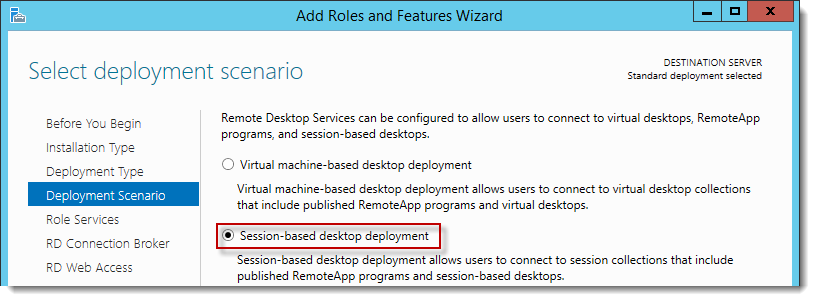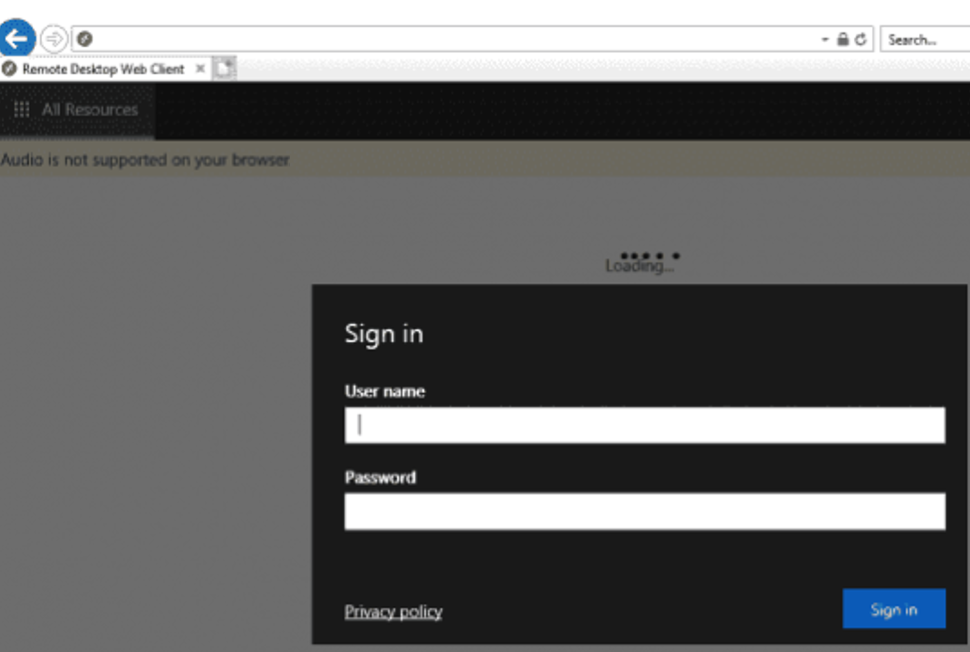

- Windows server 2012 r2 remote desktop services web access full#
- Windows server 2012 r2 remote desktop services web access windows#
Windows server 2012 r2 remote desktop services web access windows#
With both methods currently available in Azure (Load Balanced Set & Windows Azure Traffic Manager) we are able to configure basic load balancing, however more advanced features like Weight, true session affinity and load balancing statistics are still missing. Therefor there is not real Session Affinity, other than to rely on the DNS TTL (which you could of course set to i.e. Both scenarios are based on a DNS Time-to-Live (TTL), clients will continue to use a given cloud service until its local DNS cache expires. “Closeness” is determined by a network performance. The performance method locates the origin of the traffic and routes it to the closest cloud service.

In case of Round Robin, the user’s computer calls the cloud service directly and Windows Azure Traffic Manager resolves the DNS entry for the company domain to the IP address of the cloud service. No actual service traffic routes through Windows Azure Traffic Manager. With Windows Azure Traffic Manager you can choose between different load balancing mechanisms like Round Robin, Performance and Failover. This feature is currently in preview in Windows Azure and allows taking more control over the load balancing. There is however a new feature that has been added to Azure very recently which is called Windows Azure Traffic Manager. And also, settings like time out and a Weight per destination server cannot be configured. And yes, you can argue that the fact that some services need Session Affinity is their problem, the reality however is that in some scenario’s you simply can’t get away with that. These services allow users not to be redirected to different servers during a single session.

First of all, you cannot configure Session Affinity (sticky sessions). This works great for most common web sites, however, the load balancing options in Azure are a black box, and you cannot control or setup anything besides a protocol and a port. You can do so by configuring a load balanced set. Today, Azure supports a way to load balance services on multiple machines running in Azure. Since these two roles need to be contacted from the outside, we need to have a mechanism that allows us to publish these roles to the outside in a load balanced manner.

Windows server 2012 r2 remote desktop services web access full#
They will browse to the RD Web Access page, login, select a Remote App of Full Desktop and they will then connect to an the RD Connection Broker and get redirected to a RD Session Host, all by connecting through the RD Gateway. These two roles actually need to be published to the outside in order for people to access the RDS environment. How are we going to make sure we have load balancing for that too? However, as you can see I have also deployed the RD Web Access and RD Gateway on the multiple servers. So that creates High Availability for the RD Session Host role. The RD Connection Broker role itself comes with an internal load balancing mechanism to balance the workload on the RD Session Host Servers and allow reconnecting to disconnected sessions. In the environment I have performed a Standard Session-Based Deployment and after finishing this deployment, I added RD Connection Broker High Availability, resulting in a centrally stored database running on the SQL01 which is used by the RD Connection Broker role running on both the RDS01 and the RDS02 in an active-active scenario. All servers are running Windows Server 2012 R2 (preview).


 0 kommentar(er)
0 kommentar(er)
